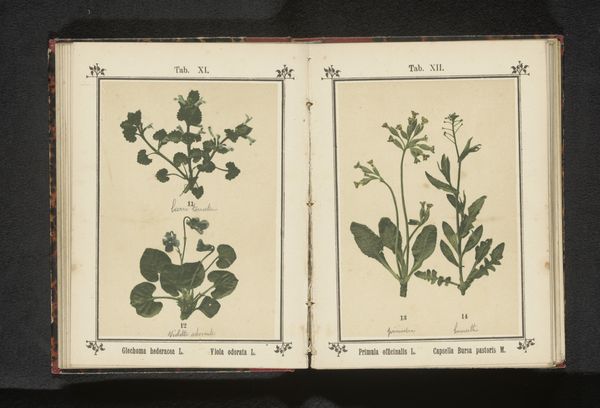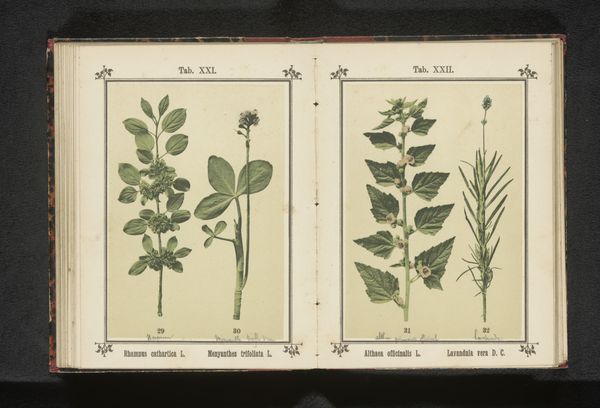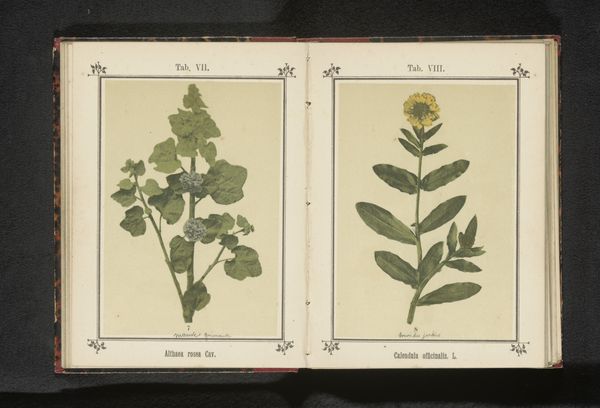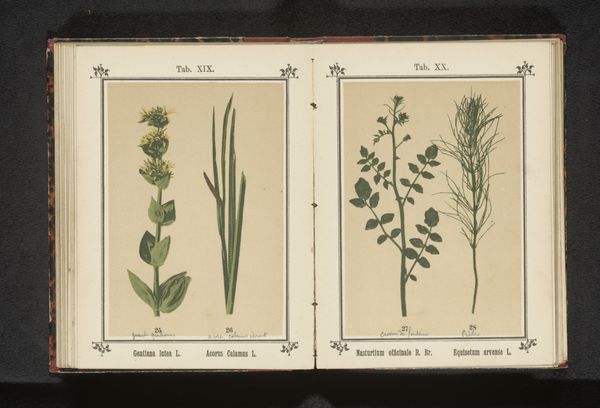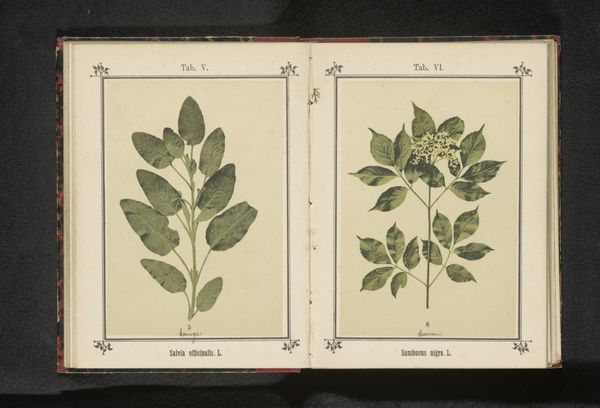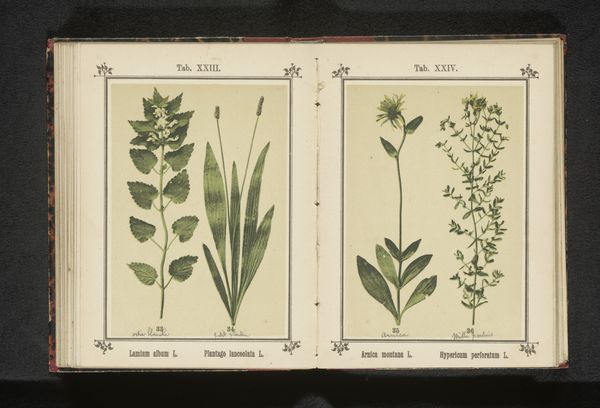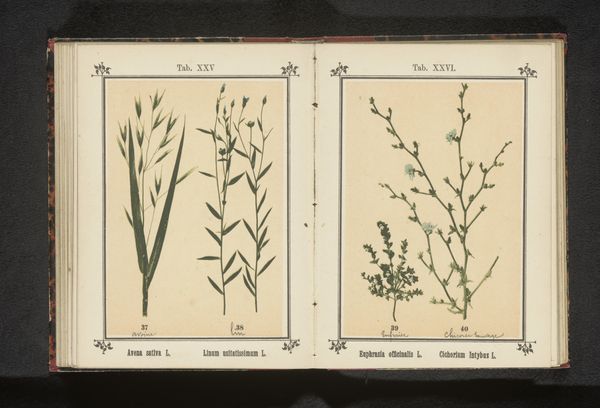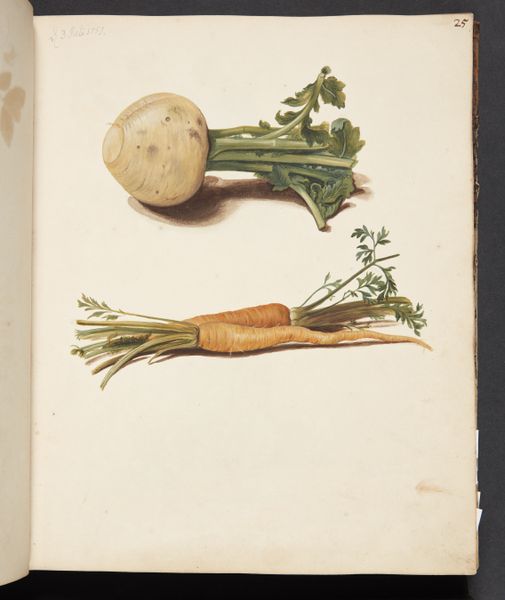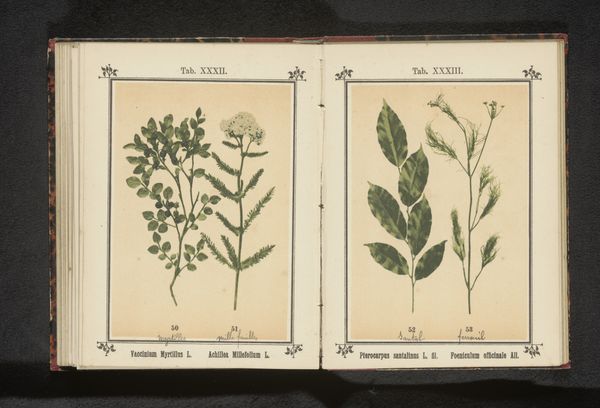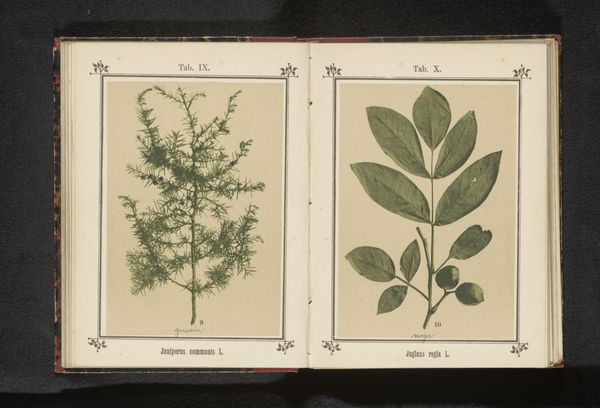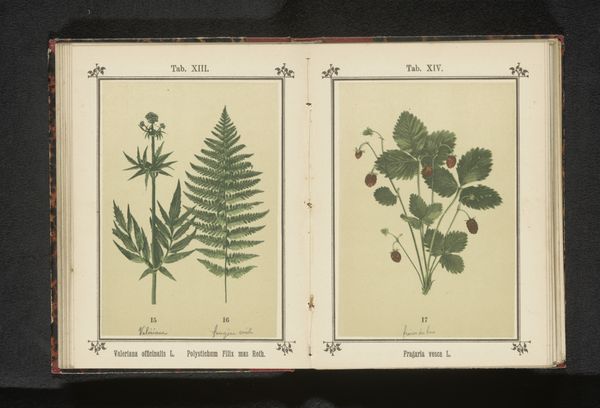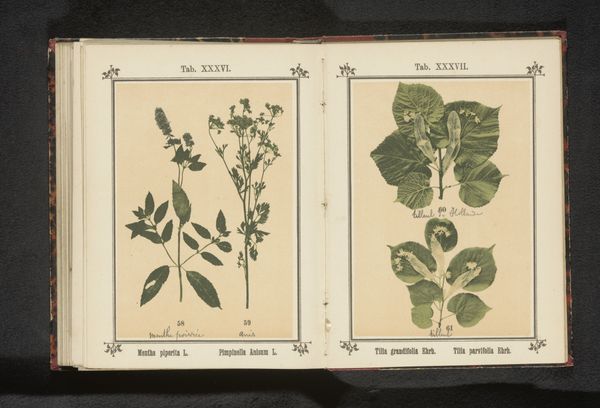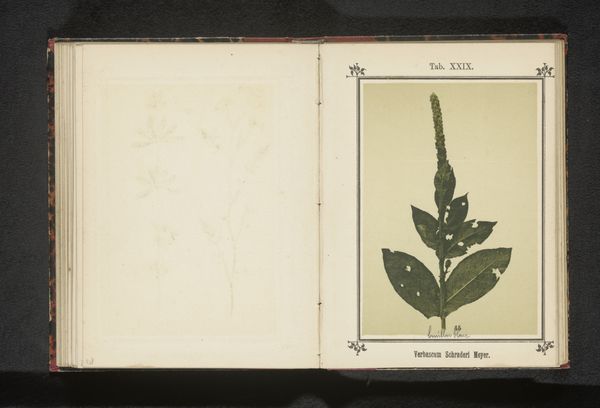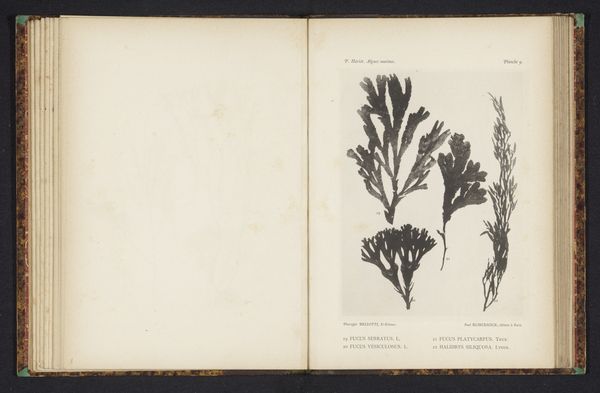
drawing, print, paper, watercolor
#
drawing
# print
#
paper
#
watercolor
#
coloured pencil
#
watercolor
Dimensions: height 136 mm, width 95 mm
Copyright: Rijks Museum: Open Domain
Editor: Here we have an image from before 1894, "Blad van een klein hoefblad en een blad van een groot hoefblad," attributed to an anonymous artist. It combines drawing and printmaking techniques on paper with watercolor, maybe even colored pencil. I find the almost scientific precision quite striking. What stands out to you in this piece? Curator: Immediately, I'm drawn to the materials. Paper, printmaking, watercolour – seemingly simple, yet heavily coded with class and access. The labour involved in both creating the original botanical specimens that inform this work, and then meticulously recreating them, suggests a specific type of scientific inquiry rooted in empire and colonialism. Editor: Could you elaborate on that a little bit more? I’m interested in your take. Curator: Consider where these plants are located and who had access to them pre-1894. Someone cultivated, extracted, and transported these specimens. The anonymous artist then mediated that encounter through drawing, print, and paint. It’s a translation of labor. The precision isn't just scientific, but about controlling and categorizing nature. How does its original existence as part of a book further shape this categorization? Editor: So, you’re saying that even in this seemingly simple depiction of plants, there's a whole web of production and consumption tied to social structures? Curator: Precisely! The artwork prompts questions of material and human agency— questions not usually associated with traditional art history. Editor: I never would have thought of it that way, it definitely adds another layer of meaning to something I initially saw as just a botanical illustration! Curator: Right, and that’s the power of considering materials and context!
Comments
No comments
Be the first to comment and join the conversation on the ultimate creative platform.
